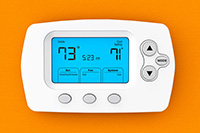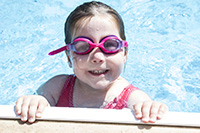Watch the slideshow to access resources on health, safety, and legal issues that can also affect child care licensing.
Slideshow
- Cribs
 What kinds of cribs can and should be used to both keep children safe and allow for easy access?
What kinds of cribs can and should be used to both keep children safe and allow for easy access?Learn more about regulations around cribs in child care settings.
Read the U.S. Food and Drug Administration’s statement about medical cribs used in homes and child care settings.
The U.S. Consumer Product Safety Commission has adopted new, stricter standards for infant cribs and crib safety.
- Temperature and Air Quality
 Most children love and absolutely need outdoor play during the time they spend in child care and child care regulations require that they outdoor time at least twice a day. But when is it too hot or cold for outdoor play? And when can the air quality be a problem (especially for children with breathing issues)?
Most children love and absolutely need outdoor play during the time they spend in child care and child care regulations require that they outdoor time at least twice a day. But when is it too hot or cold for outdoor play? And when can the air quality be a problem (especially for children with breathing issues)?Learn more about Child Care Weather Watch for safe outdoor play.
Maryland’s Department of Health and Mental Hygiene recommends the Iowa Health Department’s Child Care Weather Watch Wind-Chill and Heat Index Factor Charts as a guide to protect children from over-exposure to extreme weather while playing outdoors.
Sign up to receive email alerts for air quality before your children play outdoors.
- Safety
 Maryland law requires that all child care facilities (child care centers and family child care providers) have a written emergency preparedness plan.
Maryland law requires that all child care facilities (child care centers and family child care providers) have a written emergency preparedness plan. Motor vehicle crashes are the leading cause of unintentional injuries and deaths among children in the U.S. According to Maryland law, every child under 8 years old must ride in an appropriate car restraint seat unless the child is 4 feet, 9 inches or taller. For information on selecting and using car restraint seats, go to Maryland Kids in Safety Seats (Maryland KISS).
 The playground is typically a magical place for children. The U.S. Consumer Product Safety Commission estimates, though, that more than 200,000 children a year suffer injuries requiring medical treatment when playground equipment is used improperly. Learn more about how to keep children safe during playtime. Download the Office of Child Care’s Playground and Water Safety Guidelines (PDF).
The playground is typically a magical place for children. The U.S. Consumer Product Safety Commission estimates, though, that more than 200,000 children a year suffer injuries requiring medical treatment when playground equipment is used improperly. Learn more about how to keep children safe during playtime. Download the Office of Child Care’s Playground and Water Safety Guidelines (PDF). - Health
 One of a child care providers foremost responsibilities is, of course, to keep children healthy. For a wide range of information on multiple health issues, connect with the DECD’s Child Health Issues portal page.
One of a child care providers foremost responsibilities is, of course, to keep children healthy. For a wide range of information on multiple health issues, connect with the DECD’s Child Health Issues portal page.To learn more about health-related training for child care and early education providers, download the current list of Medication Administration and Asthma Trainers (PDF) who are approved by the Office of Child Care.
- Legal
 “Each day, the safety and well-being of some children across the Nation are threatened by child abuse and neglect. Intervening effectively in the lives of children and their families is not the responsibility of any single agency or professional group, but rather it is a shared community concern and responsibility.” – from The Role of Professional Child Care Providers in Preventing and Responding to Child Abuse and Neglect
“Each day, the safety and well-being of some children across the Nation are threatened by child abuse and neglect. Intervening effectively in the lives of children and their families is not the responsibility of any single agency or professional group, but rather it is a shared community concern and responsibility.” – from The Role of Professional Child Care Providers in Preventing and Responding to Child Abuse and NeglectRead the entire manual to better understand how providers and the other people in children’s lives can help to prevent child maltreatment.
- Legal
 Learn more about some of the other legal issues that can impact child care:
Learn more about some of the other legal issues that can impact child care:- See the list of Maryland-approved private electronic fingerprinting locations where individuals can obtain digital fingerprint data for criminal background checks.
- Access the Maryland Sex Offenders Registry, which is maintained by the Maryland Department of Public Safety and Correctional Services. This site also provides “amber alert” information for missing and abducted children.
- Use the Maryland Judiciary Case Search service to gain free, public access to criminal and civil case records.

